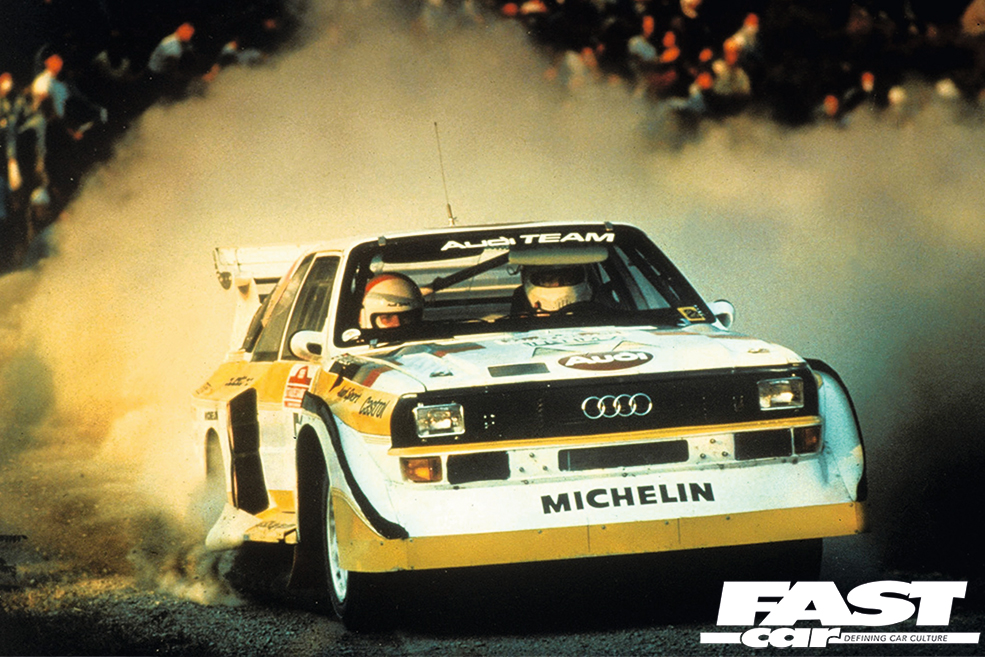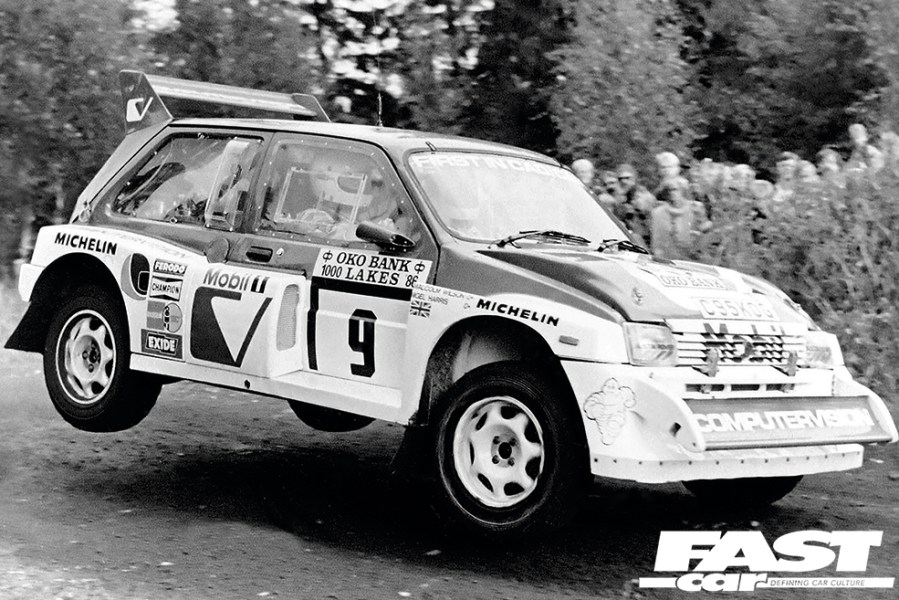GROUP B RALLYING (1982-1986)
Rallying has always taken road cars to the extremes of tuning. Today’s WRC machines cost hundreds of thousands of pounds and share few components with the road cars they’re based on. But in the 1980s, Group B rallying made today’s WRC look tame.
The cars were so wild they were deemed too fast to compete, and after just four years, which included many injuries and several deaths, it was banned altogether.
Group B rallying was based on the manufacturer having to build 200 road going versions of the car to enable it to be homologated for rallying. They were then allowed to produce another 20 further developed cars to enable that version to compete. Due to these very small production numbers and no rules to limit performance or specification, all of the top manufacturers built cars to compete. The result was total madness on four wheels!

Before long the world was seeing cars with huge arches and spoilers, weighing well under 1000kg but packing over 600bhp, tearing through forest tracks, spitting fire from their exhaust pipes. With no restrictions on specification it was incredibly high tech, with anti-lag systems, DSG gearboxes, twin-charged engines, and composite bodywork materials such as carbon and kevlar were all used for the first time in Group B.
The action was nothing short of mind blowing. If you’ve never seen it before, watch some of the many Group B videos on YouTube to see what we mean. Group B may have been banned in 1987, but the cars involved, such as the Ford RS200, Peugeot 205 T16, Audi Sport Quattro, Lancia Delta S4, Metro 6R4, Renault 5 Turbo, and many others, are all legends in their right. We’ll never see the like again, but it was great while it lasted!




